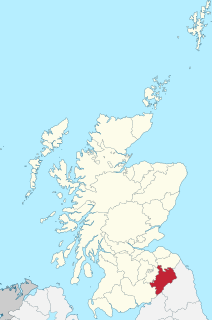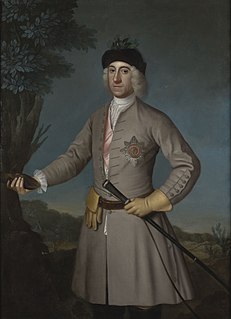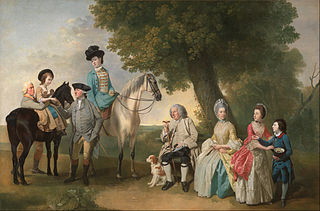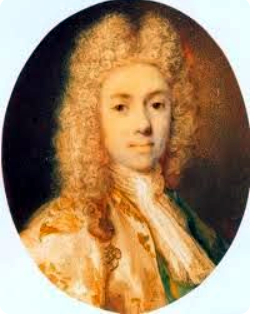Andrew Henderson (fl. 1731 – 1775) was a Scottish writer and bookseller.
Floruit, abbreviated fl., Latin for "he/she flourished", denotes a date or period during which a person was known to have been alive or active. In English, the word may also be used as a noun indicating the time when someone flourished.
Henderson was born in Roxburghshire. Between 1731 and 1735 he attended Marischal College, Aberdeen, gaining a MA. In January 1748 he published an account of the Jacobite rising of 1745, The History of the Rebellion, 1745 and 1746. In 1766 he published The life of William Augustus, Duke of Cumberland, which praised the Duke. This brought him into controversy with Tobias Smollett. He also attacked William Guthrie's History of Scotland in a Dissertation on the Royal Line of Scotland (1771). He has been described as an "extremely patriotic" Scot. [1]

Roxburghshire or the County of Roxburgh is a historic county and registration county in the Southern Uplands of Scotland. It borders Dumfriesshire to the west, Selkirkshire to the north-west, and Berwickshire to the north. To the south-west it borders Cumberland and to the south-east Northumberland, both in England.

Marischal College is a large granite building on Broad Street in the centre of Aberdeen in north-east Scotland, and since 2011 has acted as the headquarters of Aberdeen City Council. However, the building was constructed for and is on long-term lease from the University of Aberdeen, which still uses parts of the building to house a museum and for ceremonial events. Today, it provides corporate office space and public access to council services, adjacent to the Town House, the city's historic seat of local government. Many Aberdonians consider Marischal College to be an icon of the "Granite City" and to symbolise the zenith of Aberdeen's granite-working industry.

Aberdeen is a city in northeast Scotland. It is Scotland's third most populous city, one of Scotland's 32 local government council areas and the United Kingdom's 37th most populous built-up area, with an official population estimate of 196,670 for the city of Aberdeen and 228,800 for the local council area.







